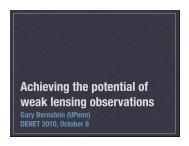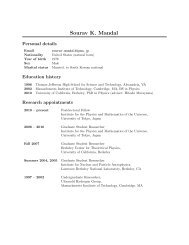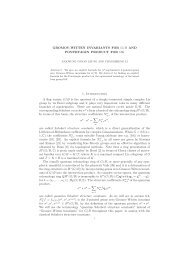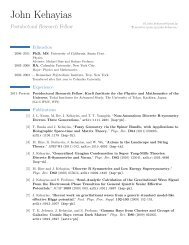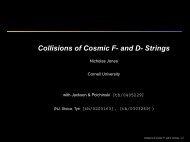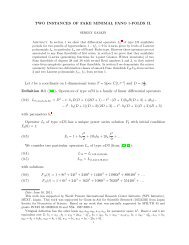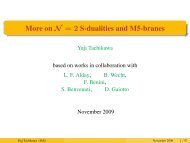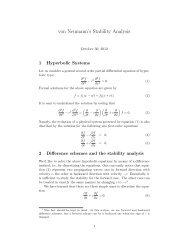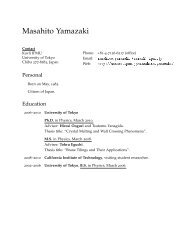STUDY SUMMARY - IPMU
STUDY SUMMARY - IPMU
STUDY SUMMARY - IPMU
You also want an ePaper? Increase the reach of your titles
YUMPU automatically turns print PDFs into web optimized ePapers that Google loves.
<strong>SUMMARY</strong> REPORT<br />
WIDE FIELD FIBER-FED OPTICAL<br />
MULTI-OBJECT SPECTROMETER (WFMOS)<br />
4.0 Instrument Performance<br />
4.1 Optical Throughput<br />
Throughput is a key parameter as it ultimately governs how quickly observations can be<br />
made. The Optical Throughput allocation, where each element of the design was assigned a<br />
throughput to match or exceed was created and these values are included as requirements in the<br />
FPRD. As requirements, these values represent the minimum performance; the instrument design<br />
strategy is to maximize performance and the Current Best Estimate (CBE) is presented here. As<br />
the instrument design matures, continued improvement is sought through subsystem design<br />
choices and balancing resources throughout the instrument system to maximize total throughput.<br />
The instrument CBE is presented in Table 4.1-1 and is supplemented with the estimated<br />
throughput from external factors such as the telescope primary, the WFC, and atmospheric dispersions.<br />
The instrument performance estimates, also include the variations between the different<br />
surveys. For example, the Dark Energy surveys require a different order sorting filter type from<br />
the Galactic Archaeology surveys and produce a different throughput estimate for each survey<br />
type. The throughput is presented at the wavelength extremes of 420 nm and 970 nm and several<br />
wavelengths in between.<br />
58



